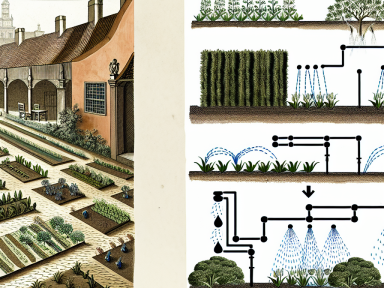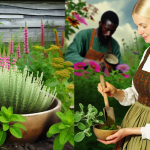Understanding Your Soil
Effective water retention starts with understanding your soil type. Not all soils are created equal, and each type has different water-holding capacities. Here are a few key points to keep in mind:
- Clay Soils: Have high water retention but poor drainage. They need organic matter to improve aeration and drainage.
- Sandy Soils: Drain water quickly and have poor water retention. Adding organic matter can help improve water-holding capacity.
- Loamy Soils: The ideal balance of clay, sand, and silt. They retain moisture well and have good drainage.
The Magic of Mulching
Mulching is a time-tested technique that helps in retaining soil moisture, reducing evaporation, and controlling weeds. Here’s how you can make the most of it:
- Choose the Right Mulch: Organic mulches like straw, leaves, and compost break down over time and improve soil structure. Inorganic mulches like gravel or stone can also be effective but don’t improve the soil.
- Layering: Apply mulch at a depth of 2-3 inches to ensure effective moisture retention without smothering the plants.
- Timing: The best time to mulch is late spring, once the soil has warmed up but before the summer heat kicks in.
Drip Irrigation Systems
Drip irrigation is a highly efficient way to water your garden directly at the root zone, minimizing water wastage. Here’s how to maximize its benefits:
- Set Up a Timer: Automate your system with a timer to provide consistent watering without the need for daily manual checks.
- Adjust Seasonally: Modify your irrigation schedule according to the season. Less frequent, deeper watering is often more effective during the growing season.
- Check for Leaks: Regularly inspect your system for leaks or clogs to ensure optimal performance.
Water-Holding Crystals and Gels
If you’re dealing with particularly thirsty plants or poor soil, consider using water-holding crystals or gels. These products can be mixed into the soil to help retain moisture around the root zone:
- Application: Mix crystals or gels into the soil at the root level, approximately 5-6 inches deep.
- Watering: Initially, you may need to water more frequently until the crystals expand and start to retain moisture effectively.
- Longevity: These products can be effective for several growing seasons, depending on soil conditions and plant needs.
Plant Selection
The right plant selection can significantly impact your garden’s water retention. Opt for drought-tolerant plants, which are naturally adept at conserving water:
- Native Plants: Local flora is often more adapted to the natural rainfall and soil conditions of your area.
- Succulents: These plants store water in their leaves or stems and can survive long periods of drought.
- Deep-Rooted Plants: Varieties with deeper root systems can access underground water reserves, reducing the need for frequent surface watering.
Regular Maintenance
Even with the best techniques, regular maintenance is crucial for effective water retention:
- Weed Control: Weeds compete with your plants for water and nutrients. Regular weeding keeps them in check.
- Pruning: Proper pruning encourages healthy growth and reduces water loss through excessive foliage.
- Soil Testing: Periodic soil tests can help you understand nutrient levels and make informed decisions about soil amendments.




GIPHY App Key not set. Please check settings